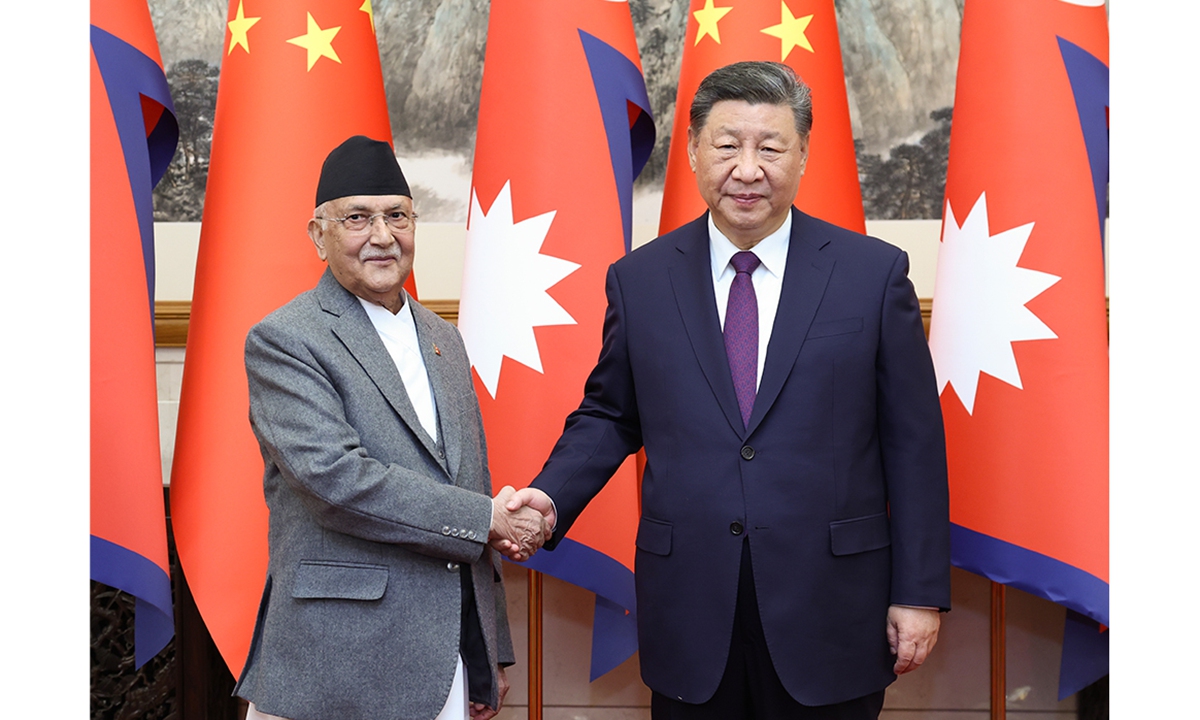The Belt and Road Initiative in Nepal: A Double-Edged Sword for Foreign Relations

The recent signing of the Belt and Road Initiative (BRI) cooperation framework between Nepal and China marks a significant milestone in their bilateral relationship. The agreement includes ten prioritized projects aimed at fostering infrastructure development and economic cooperation. However, this move has sparked intense debates about Nepal’s foreign policy direction, with potential risks of falling into a debt trap, straining relations with India and the United States, and jeopardizing its sovereignty.
1. The Promise of Economic Growth or a Debt Trap?
Nepal's inclination towards China under the BRI framework comes with both opportunities and risks. While China’s BRI projects have transformed economies globally by enhancing connectivity and trade, they have also raised concerns over the associated financial burdens. Examples such as Sri Lanka's Hambantota Port, where unsustainable debt led to a 99-year lease to China, underscore the risks of relying heavily on Chinese loans.
Nepal’s ten BRI projects, including the Tokha-Chahre Tunnel, the Kathmandu-Kerung Railway, and the Hilsa-Simikot road, promise improved infrastructure. However, doubts remain about whether these projects will materialize. Critics argue that these plans are overly ambitious, given Nepal’s limited capacity for implementation, and could leave the country saddled with unmanageable debts. The ambiguity in the "Aid Assisted Finance" terminology further adds to these concerns, as it does not clearly distinguish between grants, loans, or concessional funding.
2. Straining Relations with Democratic Allies
By aligning closely with China, Nepal risks alienating key democratic partners, including India and the United States. India, with whom Nepal shares deep historical, cultural, and economic ties, has been vocal about its concerns regarding Chinese influence in the region. Similarly, the United States, a strong proponent of democratic values and transparency, may perceive Nepal’s move as a tilt towards authoritarian regimes, potentially impacting bilateral relations.
Nepal receives substantial grants and aid from both India and the U.S., which have been pivotal in its development. India’s grant assistance has supported various infrastructure projects, educational initiatives, and healthcare advancements. Meanwhile, the U.S. Millennium Challenge Corporation (MCC) Compact offers $500 million for energy transmission lines and road improvement, emphasizing transparency and accountability. The potential for strained relations with these nations could jeopardize these developmental benefits.
3. India's Strategic Concerns
India views Nepal as a key buffer state and an integral part of its strategic and security interests. The BRI agreement has heightened Indian concerns over China’s growing influence in its neighborhood. Historically, India has been quick to respond to perceived threats in Nepal. For instance, during Nepal's 2015 constitutional crisis, India imposed an informal blockade, demonstrating its willingness to leverage economic tools to safeguard its interests.
India may interpret the BRI framework as a direct challenge to its influence in Nepal. The integration of Chinese-funded infrastructure, particularly projects near the India-Nepal border, could lead to heightened surveillance and military posturing. This dynamic risks escalating tensions between the two South Asian neighbors, disrupting the peace and stability of the region.
4. The U.S. Perspective: A Clash of Values and Strategies
The United States has strategically supported Nepal’s development to counterbalance Chinese influence. The MCC Compact is a prime example of U.S. efforts to foster economic growth while promoting transparency and democratic governance.
The BRI framework, however, introduces a competing narrative. The U.S. may view Nepal’s alignment with China as an endorsement of non-transparent and state-centric models of development. This could prompt the U.S. to reassess its aid policies or amplify its soft-power initiatives in Nepal, potentially leading to a geopolitical tug-of-war.
5. The Confusing Mesh of Aid and Grants
Nepal’s reliance on Chinese aid, Indian grants, and U.S. assistance creates a complex web of financial dependencies. The varying terms, conditions, and expectations attached to these forms of aid complicate Nepal’s policy decisions.
- Chinese Aid: Predominantly loan-based, often tied to high-interest rates and conditional on the use of Chinese contractors and materials.
- Indian Grants: Focused on traditional and people-centric projects with fewer financial liabilities but strategic strings attached.
- U.S. Grants: Conditional on strict adherence to governance, transparency, and accountability, aligning with democratic values.
This intricate interplay of aid sources risks policy paralysis, as Nepal may struggle to balance competing demands while safeguarding its national interests.
6. Sovereignty at Stake?
The BRI framework raises critical questions about Nepal’s sovereignty. Critics argue that by aligning its infrastructure and economic policies with Chinese interests, Nepal risks ceding decision-making power over its development trajectory. The history of Chinese influence in smaller economies, where dependency on Chinese loans leads to long-term strategic concessions, serves as a cautionary tale.
For instance, Nepal’s acceptance of ambiguous financial terms under the BRI agreement indicates a potential shift towards policies dictated by external pressures rather than national priorities. This perception undermines public confidence and fuels skepticism about Nepal’s ability to uphold its sovereignty.
7. Broader Implications for Foreign Policy
Nepal’s foreign policy has traditionally aimed for balanced relationships with its neighbors and international allies. However, the BRI agreement signals a potential shift towards a China-centric approach, disrupting this equilibrium.
India and the U.S., both key contributors to Nepal’s development, may perceive the BRI agreement as a divergence from Nepal’s commitment to democratic values and regional stability. This perception could lead to reduced aid, diplomatic tensions, and even economic countermeasures, further complicating Nepal’s development aspirations.
Conclusion
The Belt and Road Initiative in Nepal embodies a paradox: it offers opportunities for economic growth and connectivity while posing significant risks to sovereignty, financial stability, and foreign relations. Nepal must tread carefully, ensuring that its engagement with China complements, rather than undermines, its relationships with India, the United States, and other democratic allies.
A transparent, inclusive, and balanced approach to foreign policy is essential for Nepal to navigate this complex landscape. Only by upholding its sovereignty and fostering trust with all its partners can Nepal realize its developmental goals while maintaining its autonomy and integrity on the global stage.

![From Kathmandu to the World: How Excel Students Are Winning Big [Admission Open]](https://nepalaaja.com/index.php/img/70194/medium/excel-college-info-eng-nep-2342.jpg)
